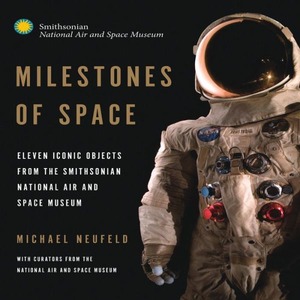Review: Milestones of Spaceby Jeff Foust
|
| The chapter on Friendship 7, for example, includes a sidebar about the spacecraft’s so-called “fourth orbit:” the world tour on the capsule NASA conducted in the months after John Glenn’s historic flight. |
The book is a collection of essays about those eleven key items from the museum’s collection, written primarily by the museum’s curators. These objects range from spacecraft like the shuttle Discovery and Friendship 7, to models and engineering replicas of other spacecraft like Skylab and Viking, to other components, including the F-1 engine and Neil Armstrong’s Apollo 11 spacesuit. Each chapter covers one of those eleven items, discussing its development and use, and sometimes how it became part of the museum’s collection.
This approach sounds like a good way to describe these items, and their role in space history, to introductory audiences. It is, but the essays can also provide insights for those more familiar with these items and their heritage. The chapter on Friendship 7, for example, includes a sidebar about the spacecraft’s so-called “fourth orbit:” the world tour on the capsule NASA conducted in the months after John Glenn’s historic flight, attracting huge audiences but not widely remembered today. The discussion of Telstar goes beyond its technical accomplishments in providing the first live transatlantic television transmissions to the debate from that era on how that capability should be used: for education or entertainment? The essay on Armstrong’s suit goes into the challenges into trying to preserve that suit, 45 years after Apollo 11; the suit is no longer in display but instead is in climate-controlled storage as curators examine ways to display it without risking deterioration.
One question the book does raise is, why eleven? Why not profile ten or twelve or fifteen or some other number of artifacts? And why not include some other items in the museum’s collection, like the model of Explorer 1, America’s first satellite; or SpaceShipOne, the first privately-developed human spacecraft; both of which are found in the museum’s centerpiece gallery, Milestones of Flight? In the book’s foreward, the authors collectively write that “these iconic objects represent the major accomplishments and programs of the United States in space.” The fact that these items don’t make the cut is testament to the richness of the museum’s collection. Perhaps BuzzFeed can come to the rescue with a listicle along the lines of, perhaps, “32 Historic Objects That Didn’t Make it into the Milestones of Space Book”—provided, of course, they’re not busy listing celebrity non-lookalikes.
